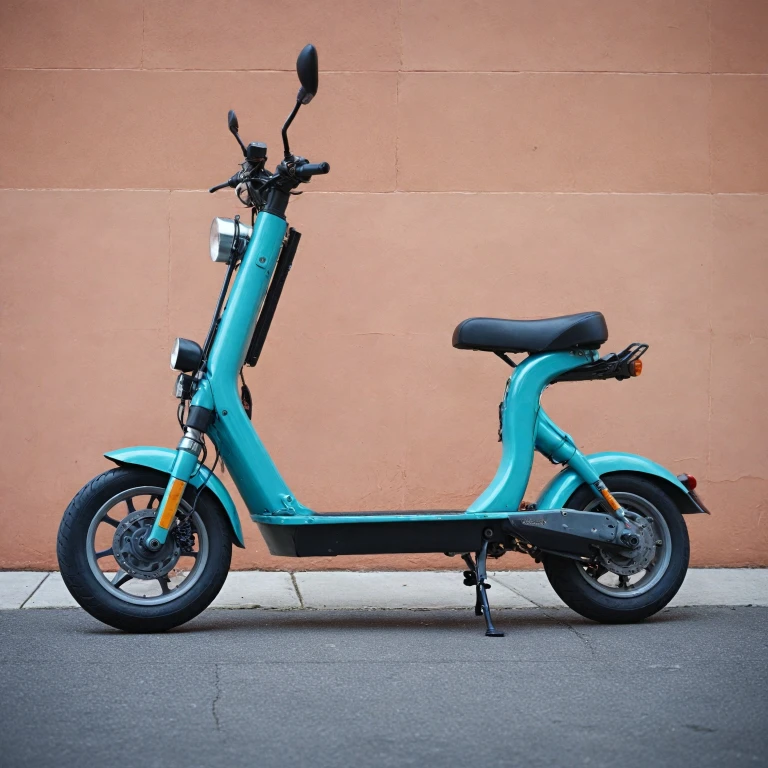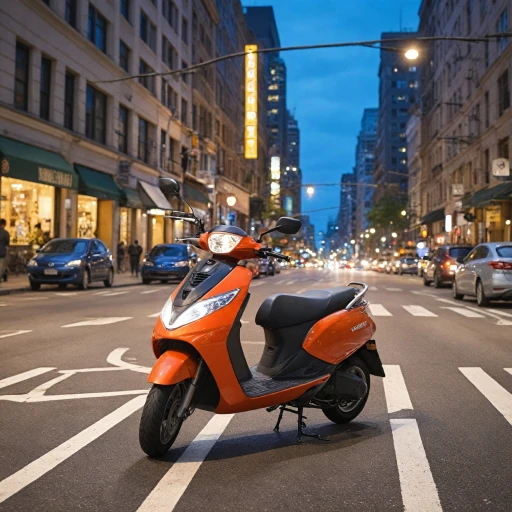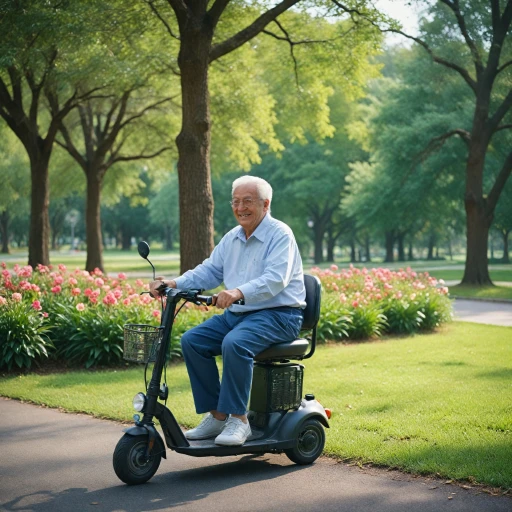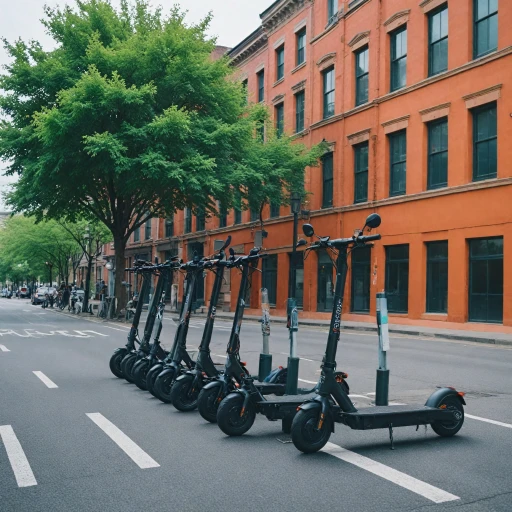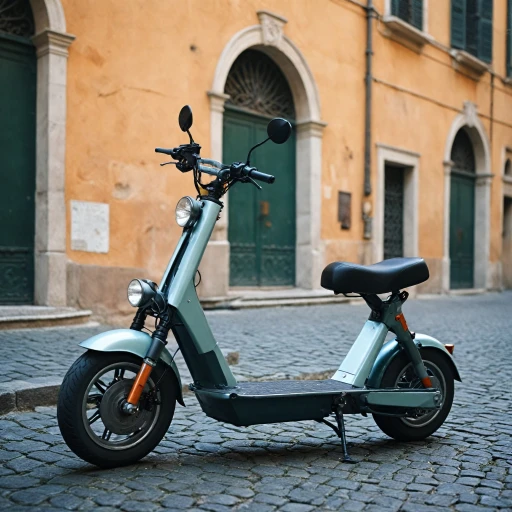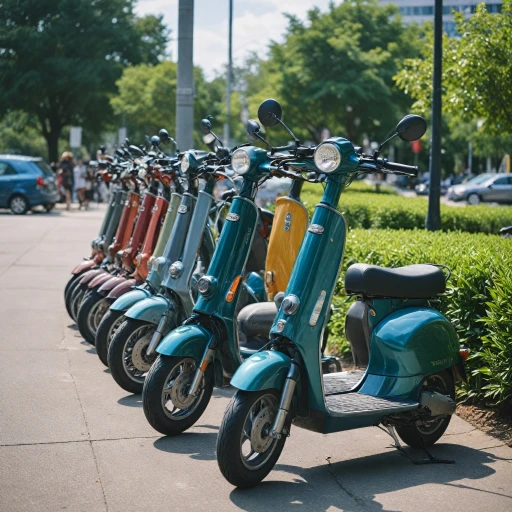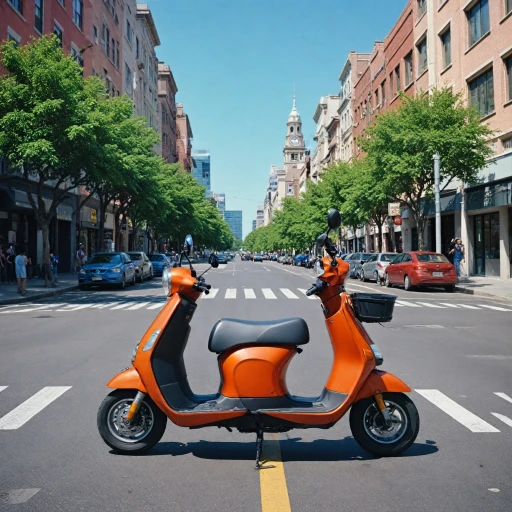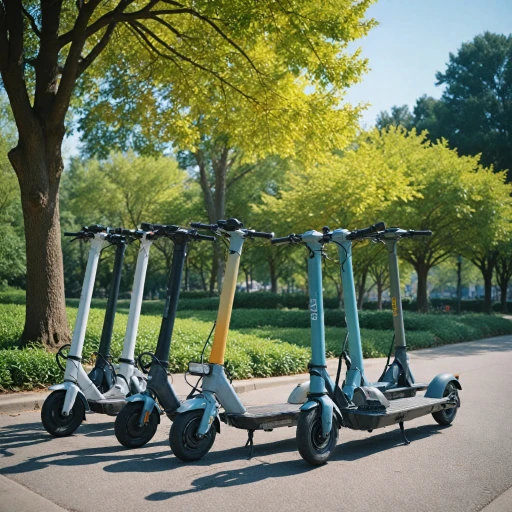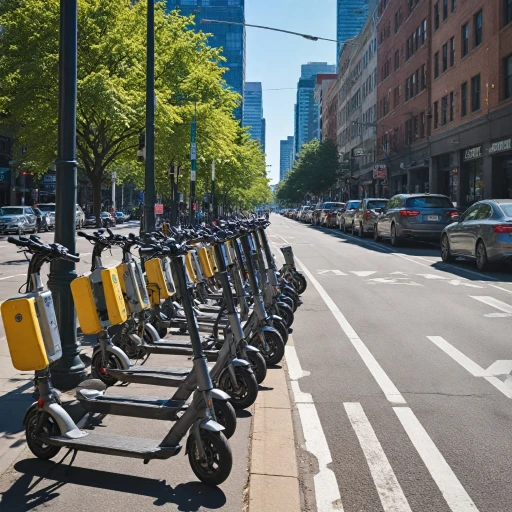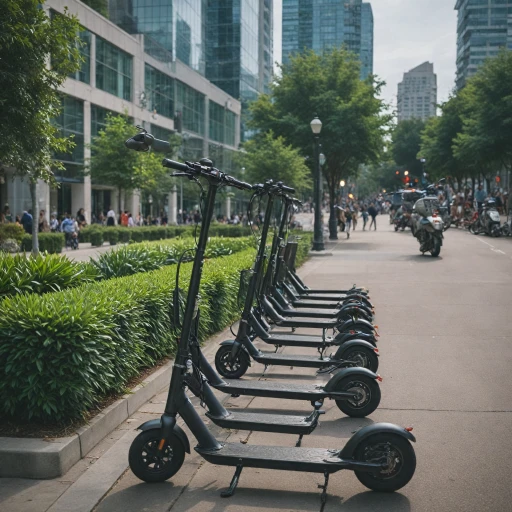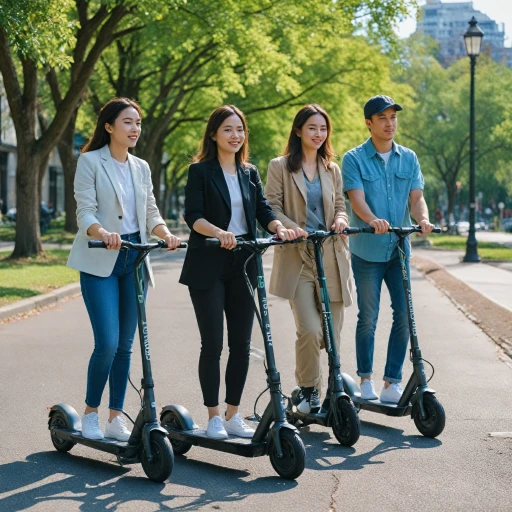
The Core Components of Electric Scooters
Understanding The Fundamental Parts
Electric scooters have become a popular mode of transportation, offering a convenient and eco-friendly way to navigate through city streets. To make an informed purchase, it’s essential to understand the key components that make up these modern devices.
The core components of an electric scooter include the motor, battery, wheels, and brakes. The motor is the heart of the scooter, influencing its speed and performance. Typically, electric scooters feature either a front or rear motor, with the rear motor often preferred for better traction and control.
Battery is another crucial component, determining the scooter’s range and power. Most units use lithium-ion batteries, valued for their durability and efficiency. The battery's specifications can significantly impact the scooter's performance and price, with premium models featuring a higher capacity for extended travel.
Key elements like the wheels and brakes ensure stability and safety during rides. Wheels come in various sizes and materials, affecting the scooter's handling and ride comfort. Tires can be air-filled or solid, each offering different advantages. A reliable braking system is vital for safe stops, with options ranging from disc brakes to electronic systems.
By understanding these core components, you can better navigate trip to the shop, make informed decisions, and ensure your electric scooter fits your needs and expectations.
The Role of the Motor in Electric Scooters
The Powerhouse: How Motors Propel Electric Scooters
The motor, undoubtedly, is the heart that powers electric scooters. This crucial component is responsible for converting electrical energy into motion, playing a central role in the performance of your ride. When you shop for an electric scooter, understanding the role of the motor helps determine whether a unit meets your needs, whether you're considering everyday commuting or adventurous rides.
Motors in electric scooters generally come in two main types: hub motors and chain-drive systems. The hub motor is commonly found mounted on the wheel axle, offering a sleek and compact design that demands less maintenance. Meanwhile, chain-driven motors provide increased torque, which might appeal to those seeking off-road thrills or additional power.
Choosing a motor involves considering several factors:
- Power output: measured in watts, the motor's power influences top speed and acceleration.
- Placement: front wheel motors enhance maneuverability, while rear wheel motors increase stability and grip.
- Efficiency: impacts battery life, having a direct effect on how far you can go on a single charge.
When checking reviews or exploring a model's total specifications, look for feedback on the pro motor performance and reliability. A scooter's motor is integral to its functionality, affecting how you engage with your environment, from smooth pavement to demanding terrain.
Despite price variations, from regular price to sale price, investing in a quality motor ensures both enjoyment and efficiency. While keen enthusiasts might explore upgrading or replacing with spare parts, regular maintenance will prolong your motor's life. For those interested in further understanding these intricate electric scooter essentials, protection, like insurance, can provide peace of mind and prolong the life of your investment.
Battery Types and Their Importance
Understanding Battery Selection for Electric Scooters
The battery is a pivotal component in any electric scooter, with its choice significantly influencing performance, price, and longevity. When evaluating your options, consider these key factors to make an informed decision. One cannot overemphasize the importance of selecting a suitable battery, as it largely determines the scooter’s range and how frequently it needs charging. Understanding different battery types will help you determine the best fit for your needs.- Battery Types: The most common battery types for electric scooters are lithium-ion and lead-acid. Lithium-ion batteries, frequently featured in products like the Segway Ninebot scooters, are prized for their light weight and efficiency, though they often come at a higher regular price. Conversely, lead-acid batteries, available more often at a sale price, tend to be heavier and provide lower performance.
- Capacity and Range: Check the battery’s capacity, usually measured in watt-hours (Wh), as it affects the scooter's travel range. Higher capacity means more mileage but can also impact the price you pay at your local shop.
- Charging Time and Lifespan: Consider how long it takes to charge the battery and its expected lifespan. Fast charging is convenient, but it might come at a cost to the battery’s durability over time. Regular use and proper maintenance, such as using a compatible battery charger, are essential for extending the lifespan of your scooter's power unit.
- Replacement Availability: Look for models with accessible spare parts. The availability of a replacement battery, whether through a quick view online or at physical stores, can influence your long-term satisfaction with the scooter.
Braking Systems: Ensuring Safety
Ensuring Safety with Adequate Braking Systems
When it comes to electric scooters, ensuring safety through effective braking systems is paramount. As the electric scooter market grows, so does the demand for reliable scooter parts, including brakes. Many electric scooters feature either mechanical or electronic braking systems, and understanding the differences can help in making an informed purchase. Mechanical brakes, such as disc and drum brakes, work by applying physical force to slow down the scooter. Disc brakes, often found on the front wheel for better control, offer strong braking power while ensuring consistent performance. They are a common choice due to their effectiveness in various weather conditions, making them a crucial part of the scooter's anatomy. Alternatively, electronic brakes, which are part of the electric motor, utilize regenerative braking technology. These systems help in converting kinetic energy back into battery power, increasing the battery's efficiency. This option reduces the wear and tear on the physical brake components, extending the overall longevity of your scooter. For enhanced safety, many scooters combine both braking systems, providing a comprehensive package for users. Such systems can be found in models from reputable brands like Segway Ninebot. Although this may elevate the unit price, the added safety and durability can justify the initial investment. Regular reviews from users underline the importance of maintaining braking systems. Regular maintenance ensures their functionality remains optimal, especially for units purchased through sale price events. Many shoppers opt to add cart spare parts, such as rear fender and brake pads, in anticipation of future repairs. In essence, whether you're commuting or using your scooter for leisure, an effective braking system should always be a top consideration. It not only ensures your safety but enhances the overall riding experience. Remember to consult total reviews and quick view options when shopping for an electric scooter to get the best value at any price unit.Wheels and Tires: Choosing the Right Fit
Choosing the Right Wheels and Tires
When you’re shopping for electric scooters, it's essential to consider the wheels and tires, as these crucial parts affect the overall performance and safety of the unit. The selection of wheels and tires impacts everything from traction to cushioning during rides, so making informed choices on these components enhances your travel experience.- Front and Rear Wheels: Many scooters come equipped with varying wheel sizes. The front wheel is often paired with a slightly larger rear wheel to provide balance and stability. It's important for buyers to understand that larger wheels generally offer a smoother ride over bumps and irregular surfaces, making them ideal for city commutes.
- Types of Tires: Electric scooters may feature solid, pneumatic, or tubeless tires. Pneumatic tires, which resemble those found on bicycles, provide a cushioned ride but require regular maintenance like checking for punctures. On the other hand, solid tires are less maintenance-intensive but can lead to a harder ride.
- Price and Tire Quality: The quality of tires can also influence the overall price of the scooter. As you consider various scooters for sale, keep in mind that while budget units might shave costs with lower-quality tires, opting for a scooter priced at a regular price point might mean better stability and durability.
- Spare and Replacement Needs: Having access to spare parts like a rear wheel or front fork can be essential, especially if you ride often and in diverse environments. Ensure that the scooter shop you choose offers a reliable spare parts program, so you can readily source a replacement when needed.
Maintenance Tips for Longevity
Extending the Life of Your Electric Scooter
Maintaining an electric scooter not only ensures safety but also enhances its lifespan, making every ride enjoyable and cost-effective. Simple yet regular attention to its components can avoid unexpected issues and financial inconvenience. Here’s how you can maintain essential scooter parts effectively:- Battery Care: The battery is the powerhouse of your scooter. Regular charging and avoiding complete discharges can prevent battery damage and help maintain its efficiency. It's crucial to use the designated battery charger provided by the manufacturer and store the scooter in conditions that do not subject it to extreme temperatures.
- Tire and Wheel Check: Examine the front and rear wheels for any signs of wear and tear. The wheels of electric scooters are pivotal for a smooth commute, affecting both performance and safety. Regularly check tire air pressure and look for potential punctures, which can impair control.
- Brake System: Ensure that both front and rear brakes respond effectively. Any signs of wear, especially on brake pads, should prompt immediate replacement to ensure safety during eventual stops.
- Motor Maintenance: Although motors require minimal maintenance, regularly inspect for any irregular noises or performance dips, which could indicate underlying issues. Proactive maintenance can prevent costly repairs.
- Daily Cleaning and Inspections: Regular cleaning of your scooter prevents dirt build-up which could affect performance over time. A simple wipe-down can also allow you to spot any small issues like loose bolts or cracked parts that may need attention.
- Spare Parts Management: Keep a supply of spare parts such as rear fender replacements or screws that might frequently need attention. This readiness can prevent delays when parts suddenly give out.
